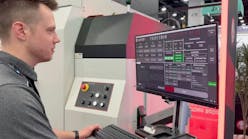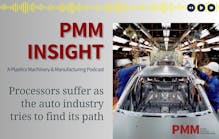By Ron Shinn
Politicians in Ohio have been absolutely giddy over Intel Corp.’s announcement that it will build a factory complex to manufacture semiconductors.
The numbers are impressive. Intel is investing up to $100 billion in what could become the world’s biggest semiconductor plant. Construction begins this year and production is scheduled to start in 2025.
Semiconductors, also known as chips, are an essential building block of nearly every piece of technology we use, and demand is surging. Only 12 percent of the world’s chips were manufactured in the U.S. in 2020.
As robust supply chains have slowed, the plastics industry has suffered directly from OEMs not having enough chips to maintain production.
The automotive industry comes first to mind, but there are other examples as well. IHS Markit analysis predicts only 15.5 million light vehicles will be produced in North America in 2022, compared with more than 17 million in 2019. It predicts it will take until 2024, or perhaps 2025, to meet pent-up demand and for new-car inventory to be determined by how many cars the industry can sell instead of how many it can build.
The chip shortage is a big reason for automakers having to reduce the number of cars they build, and many plastics processors that depend on automotive customers have seen reduced orders for parts.
But semiconductors are also used in computers, smartphones, medical equipment, appliances, military systems and much more. Every refrigerator not built is a lost order for plastic parts.
Intel’s Ohio complex, along with new chip production investments it announced in September in Arizona, will have positive long-term benefits for plastics processors and their customers. It is also significant that Intel has committed to adding chip capacity in this country instead of Asia, which currently has a tight hold on chip supply worldwide.
Intel CEO Pat Gelsinger said the new facility is a step toward Intel’s goal to rebalance global chipmaking capacity and to restore U.S. semiconductor manufacturing leadership. That sounds good to the plastics industry.
In February we have focused on problems in the automotive supply chain and automotive manufacturing innovations. Our stories have detailed the industry’s current struggles as well as future demand for higher-tech cars and more chips. Shortages will persist into 2024 but should be better after that. My fingers are crossed.
Ron Shinn, editor
Ron Shinn | Editor
Editor Ron Shinn is a co-founder of Plastics Machinery & Manufacturing and has been covering the plastics industry for more than 35 years. He leads the editorial team, directs coverage and sets the editorial calendar. He also writes features, including the Talking Points column and On the Factory Floor, and covers recycling and sustainability for PMM and Plastics Recycling.






